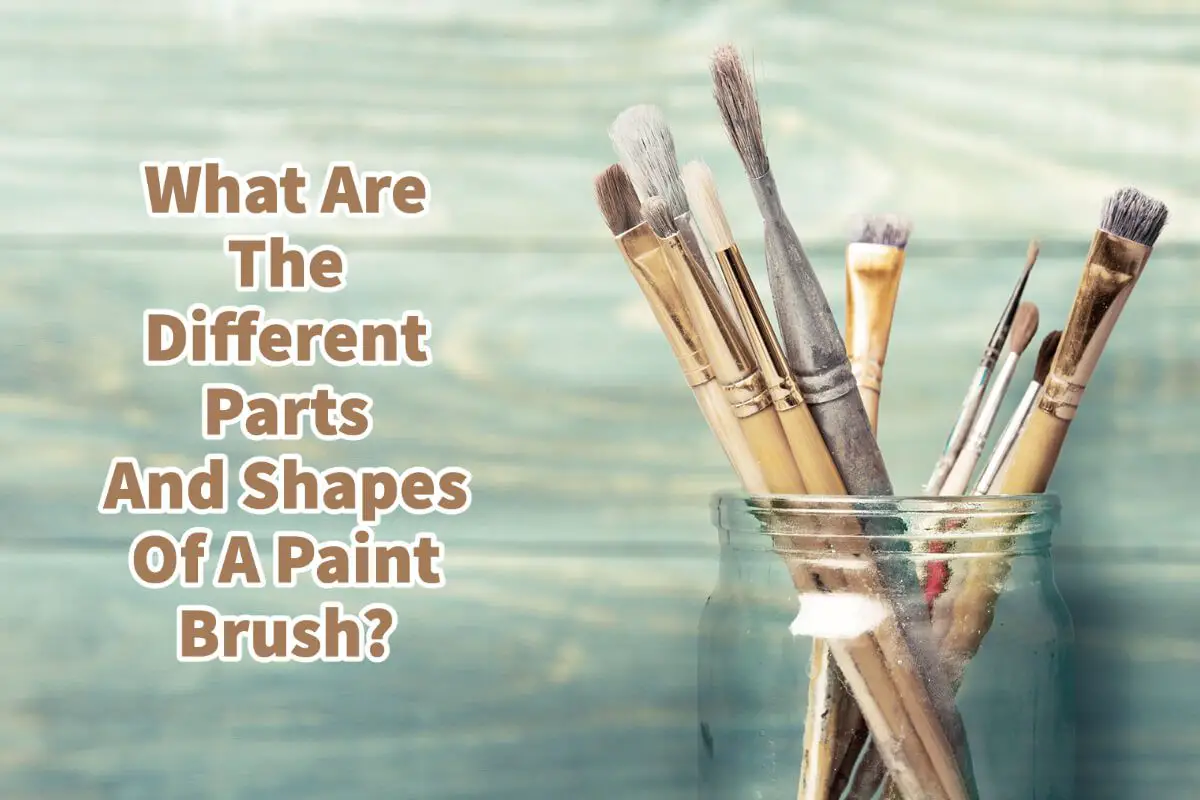Someone once said you are a painter when you pick up a paintbrush. But when you become a painter, it is good to understand more about the paintbrush.
Many parts of a paintbrush help you understand if the paintbrush you purchase is of the quality you want. Along with different kinds of a paintbrush, there are also different shapes. Each shape can have different uses for your painting. Read on as we will go over the different parts of a paintbrush, the types, and shapes of brushes available, and why it is essential to know about them.
Table of Contents
- About The Artistic Paint Brush Explained
- Natural Hair Vs. Synthetic Hair Paint Brushes Explored
- Different Parts Of A Paint Brush – Paint Brush Anatomy
- Understanding The Paint Brush Anatomy Help You Chose The Right Brushes
- Most Common Shapes And Types Of Paint Brushes
- Frequently Asked Questions
- Related Questions
About The Artistic Paint Brush Explained
Paintbrushes are the ideal tool for artists, from amateurs to professionals. They are used to apply paint to various surfaces, from canvases to walls to furniture.
But how much do you know about the different parts of a paintbrush?
Understanding the anatomy of a paintbrush is crucial for artists who want to achieve the desired results with their artwork—the Anatomy of a Paint Brush.
Natural Hair Vs. Synthetic Hair Paint Brushes Explored
Before we dive into the different parts of a paintbrush, it is essential to know that there are two main types of paintbrushes: natural hair brushes and synthetic brushes.

Natural hair brushes are made from animal hair, while synthetic brushes are made from nylon or other synthetic materials. Both brushes have unique advantages and disadvantages, and which one to use depends on the artist’s preferences and needs.

Today, there are many excellent synthetic hair paintbrushes, but some artists may prefer to use a natural hair paintbrush or according to the artist’s individual preference.
Different Parts Of A Paint Brush – Paint Brush Anatomy
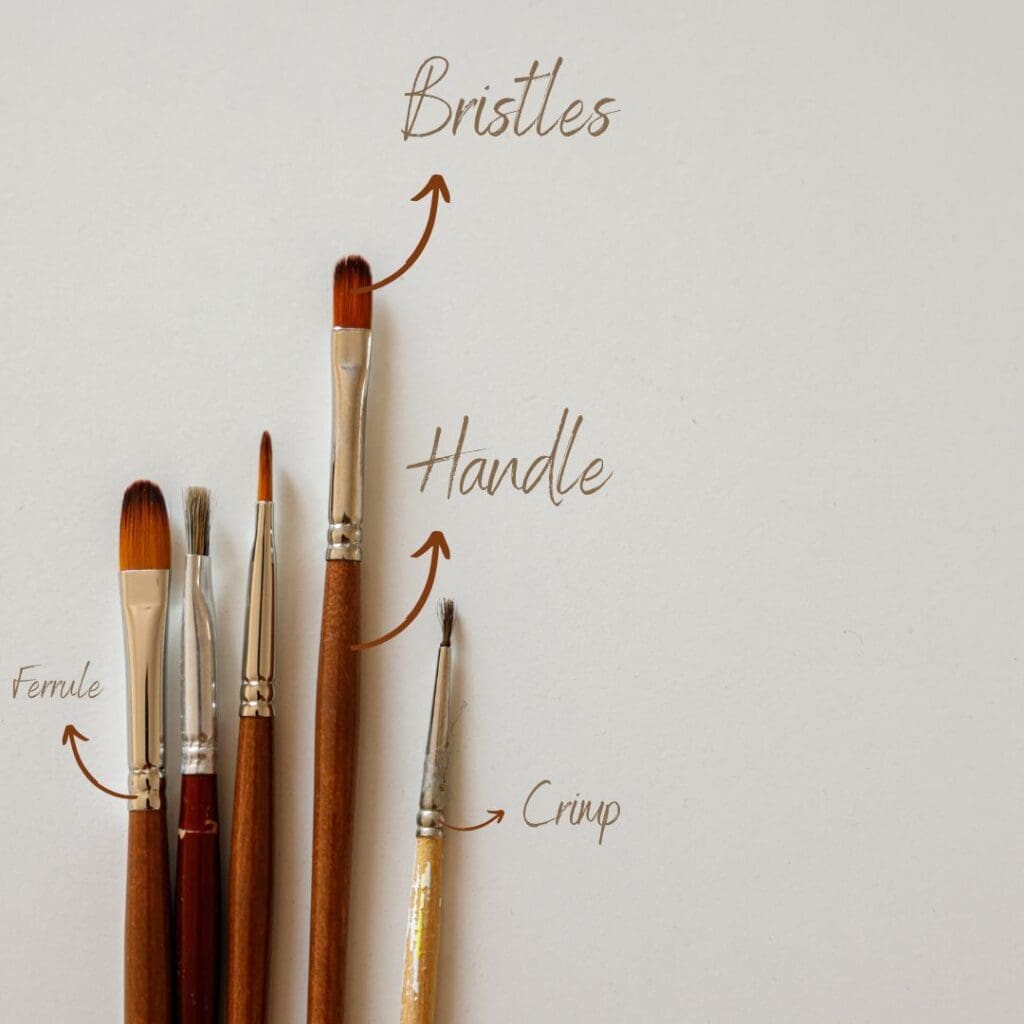
Different parts of a paintbrush are suitable for every artist to understand. Each of these parts is considered part of a paintbrush’s anatomy.
Let’s take a closer look at the different parts of a paintbrush:
The Bristles Of A Paint Brush Explained

The bristles of a paintbrush are the essential part of the brush. They are responsible for holding the paint and applying it to the surface. Bristles can be made from natural hair or synthetic materials and come in various shapes and sizes.
The Ferrule Of A Paint Brush Explained
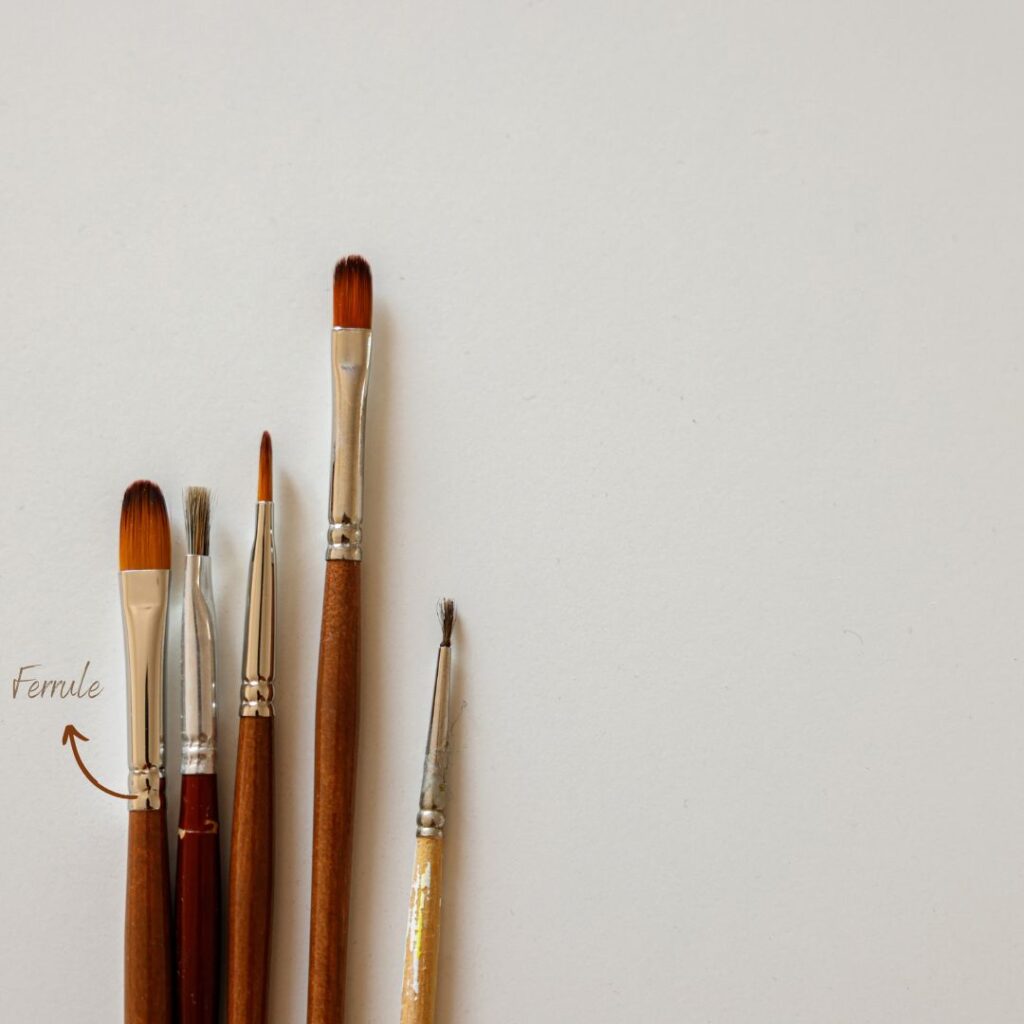
The ferrule is the metal band that connects the bristles to the handle. The ferrule must be securely attached to the bristles to prevent shedding and ensure the brush lasts long.
The Handle Of A Paint Brush Explained

The handle of a paintbrush is the part that the artist holds onto. Handles can be made from various materials, including wood, plastic, and metal. The shape and length of the handle can also vary depending on the type of brush.
The Crimp Of A Paint Brush Explained

The crimp is a minor groove in the ferrule that helps to hold the bristles in place. A good crimp is essential for preventing shedding and ensuring the brush lasts long. Many cheaper brushes may not have a very good crimp, so the hair from the brushes may start to come off.
For several reasons, knowing about the different parts of a paintbrush is essential for artists. Every artist should be familiar with the paintbrush as this is one of the essential tools.
Understanding The Paint Brush Anatomy Help You Chose The Right Brushes
Understanding the anatomy of a brush can help artists choose the right brush for their specific needs. For example, an artist working on a small canvas may want to use a smaller brush with shorter bristles.
On the other hand, if they are working on a large canvas, you may want to use a larger brush with longer bristles.
Knowing parts of the paintbrush helps you understand the right brush to choose for your painting needs.
Understanding the different parts of a paintbrush can help artists take better care of their brushes. By knowing how the brush is constructed, artists can clean and store it properly to ensure it lasts a long time.
Most Common Shapes And Types Of Paint Brushes
Not every brush that an artist uses is precisely the same. There are many different types of paintbrushes and shapes.
Here are some of the most common types of paintbrushes and their uses:
Round Shaped Brushes
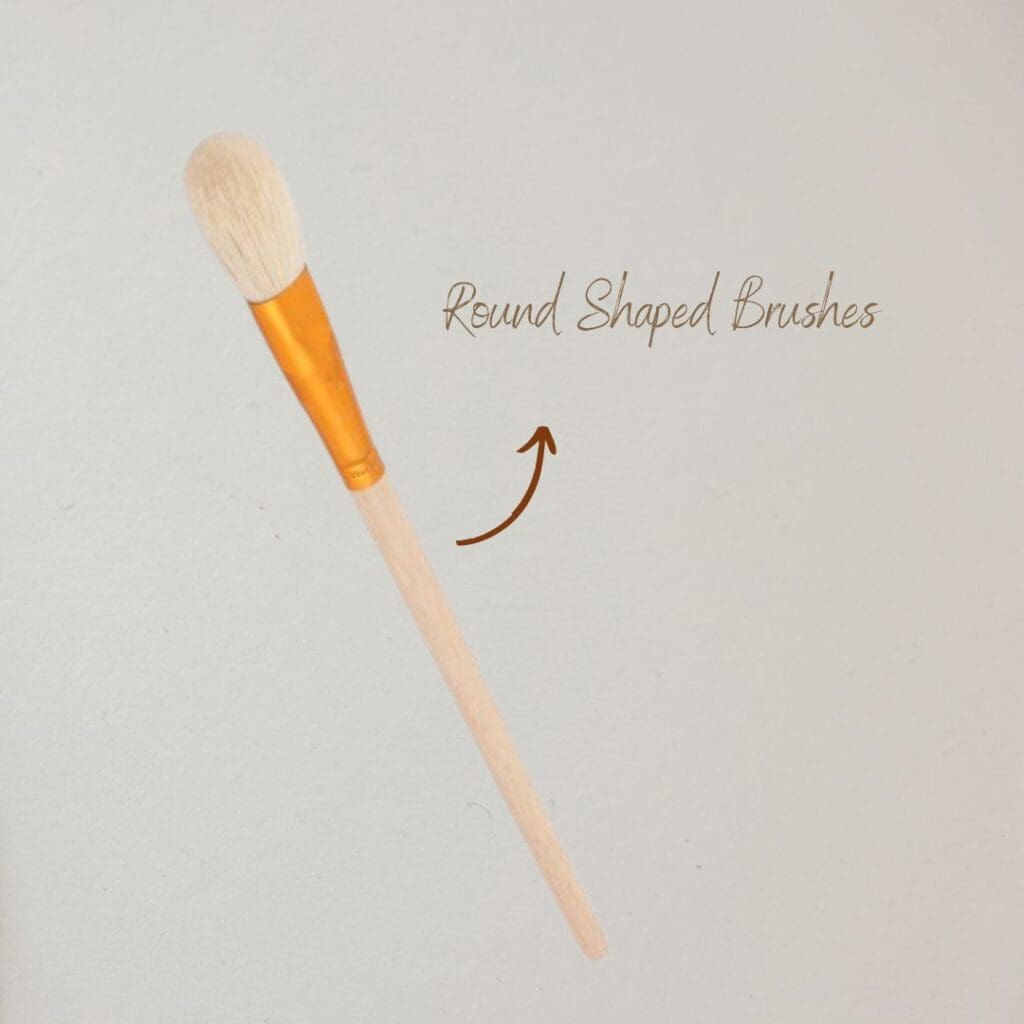
The round-shaped brushes have a pointed tip and can be used for various painting techniques, including outlining, filling small areas, and creating fine details. They come in different sizes, from very small to large, and are helpful for watercolor and acrylic painting.
Flat Shaped Brushes

These flat-shaped brushes have a flat tip and can be used for painting large areas or creating broad strokes. They are available in different widths, from minor to very large, and can be used for watercolor and acrylic painting.
Filbert Shaped Brushes
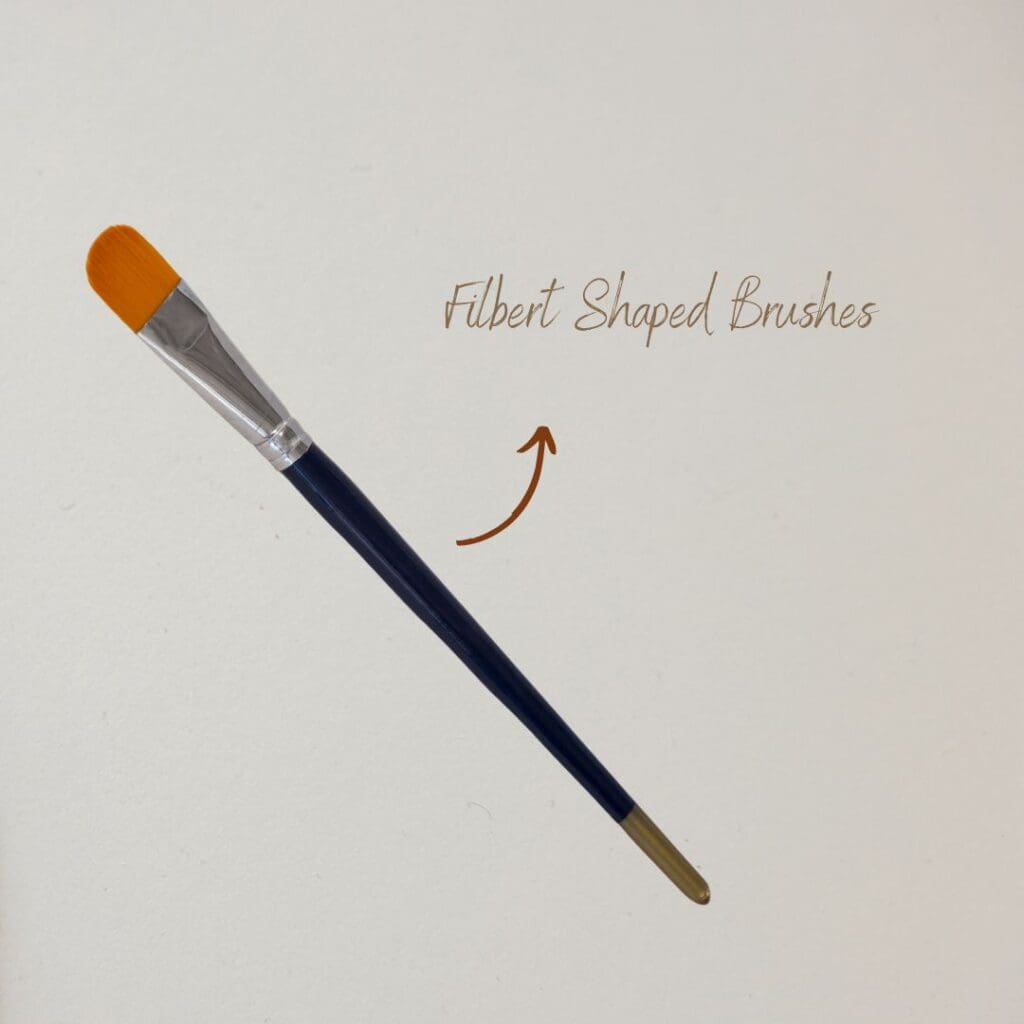
These filbert-shaped brushes have a flat, oval-shaped tip that can blend and create soft edges. They are an excellent choice for oil painting and can also be used for acrylic painting.
Fan Shaped Brushes
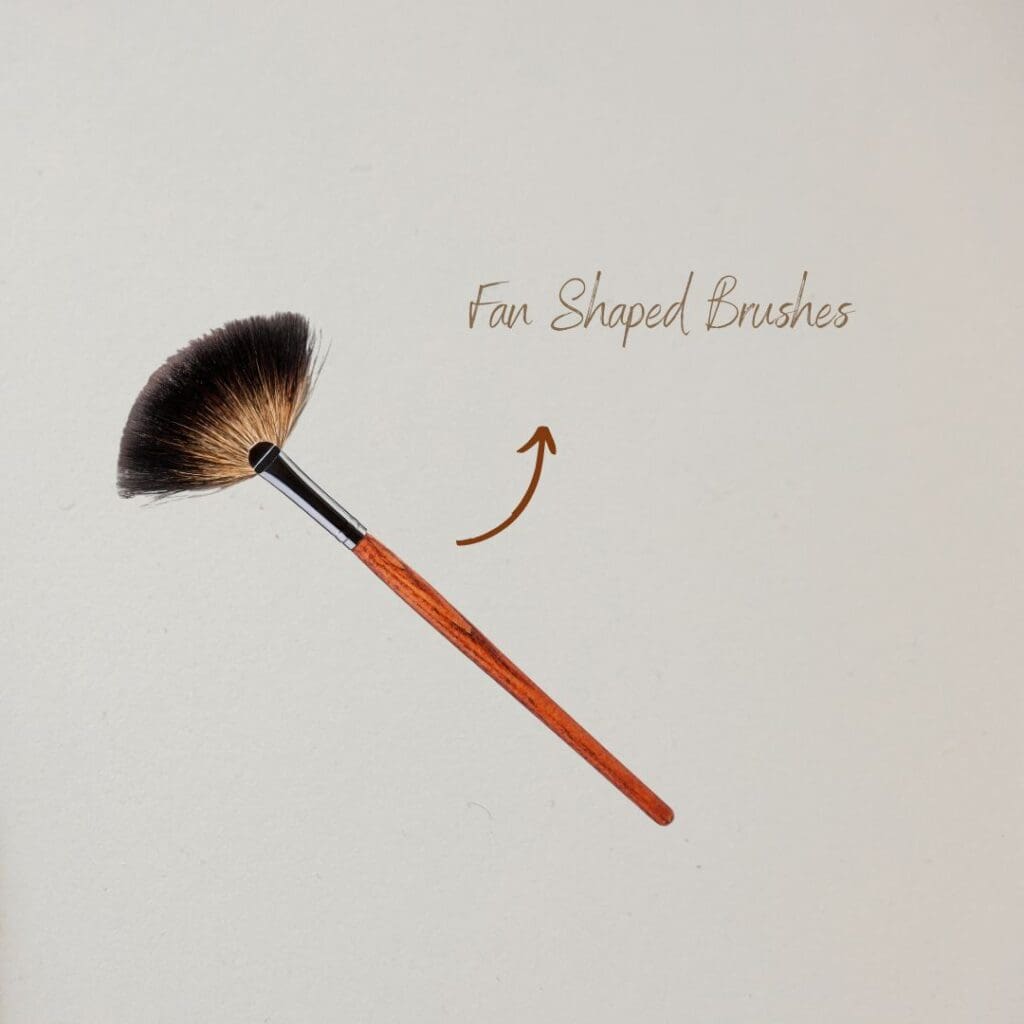
The fan-shaped brushes have a flat, fan-shaped tip and can create various textures, such as grass, foliage, and clouds. They are often used for oil painting but can also be used for acrylic painting.
Mop Shaped Brushes

The Mop-shaped brushes have a large, rounded tip and can create washes and blend colors. They are commonly used for watercolor painting.
Angle Shaped Brushes
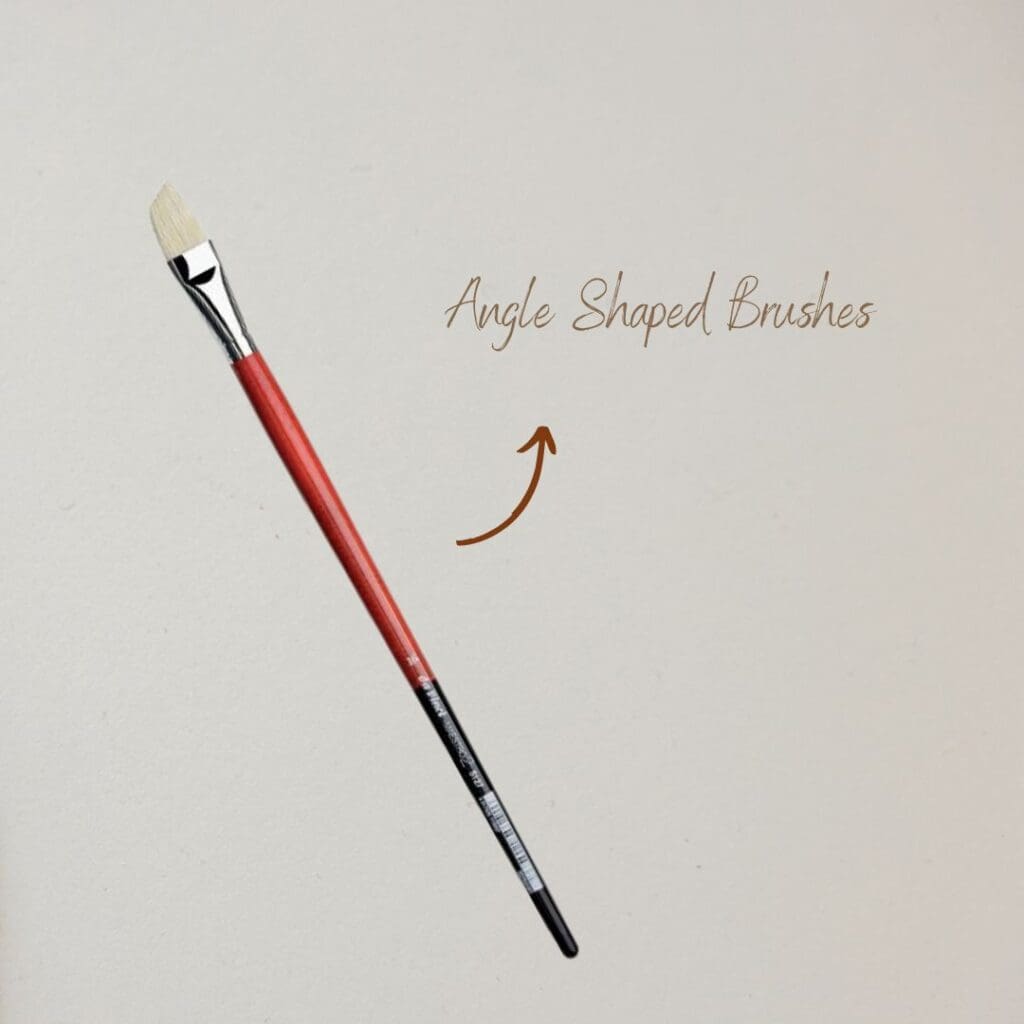
These angle-shaped brushes have a slanted tip and can create angled lines, fill small areas, and create curved strokes. They are commonly used for acrylic painting.
The Detail Brushes

The detail brushes have tiny, pointed tips and are used for creating fine details and precise lines. They come in various shapes, such as round, flat, and filbert, and can be used for watercolor and acrylic painting.
The Dagger Brushes
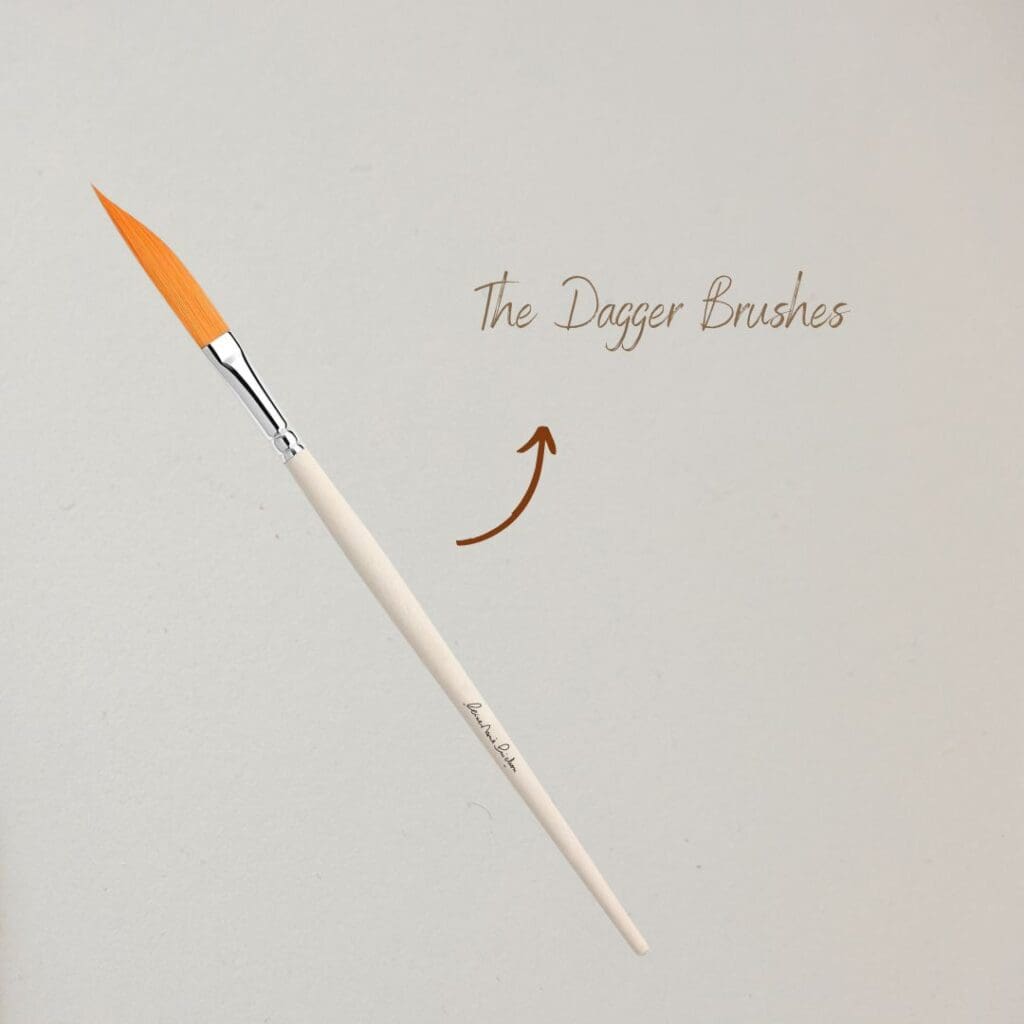
These dagger brushes have a flat, angled tip that resembles a dagger, hence the name. They are used for creating fine details, such as grass blades and flower petals, and are commonly used for watercolor painting.
The Rigger Brushes

These rigger brushes have long, thin bristles perfect for creating long, flowing lines. They are commonly used for creating detail in watercolor painting and can also be used for acrylic painting.
The Scrubber Brushes
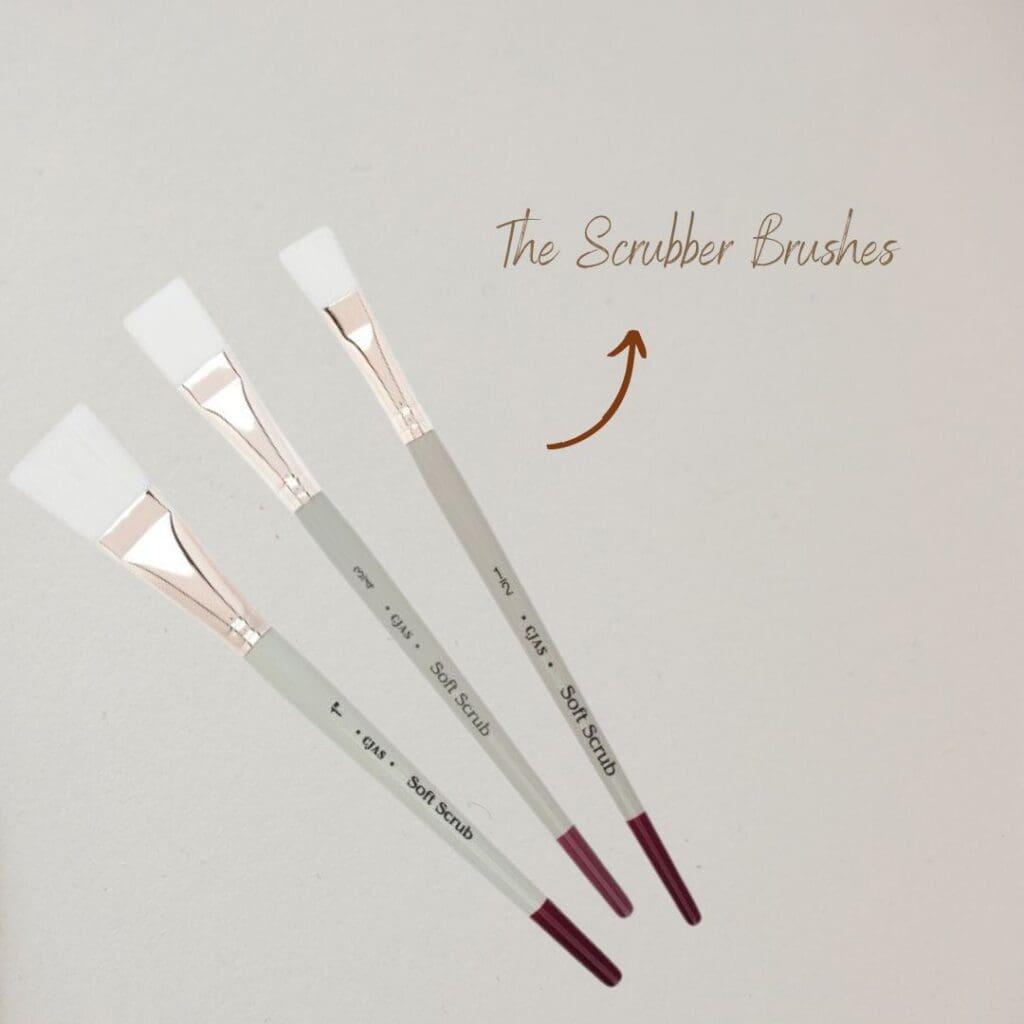
These scrubber brushes have stiff, short bristles for scrubbing paint onto a surface. They are commonly used for acrylic painting and can be used for creating textures and layering colors.
Each type of paintbrush is designed to perform a specific function, and artists must choose the right brush for the task. By having a variety of brushes at their disposal, artists can create a range of different effects and achieve the desired results in their artwork.
As a paintbrush is one of the essential tools that an artist will use, an artist must be familiar with the paintbrushes and understand their anatomy and shape.
Anita Louise Art is dedicated to art education, great artists, and inspiring others to find and create their art. We love art that uplifts and inspires. #ArtToMakeYouSmile! #ArtToMakeYouHappy!
If you want to see any of my art, you can find out more by clicking here. If you are interested in what inspires me and my paintings, you can discover more by clicking here.
We have a free newsletter and would love you to be part of our community; you can subscribe to the newsletter by clicking here. If you have any questions, I would be happy to talk to you. You can reach me, Anita, by clicking here.
Subscribe to our Anita Louise Art YouTube Channel with great videos and information by clicking here.
Join us for our podcast “5 Minutes With Art.” Spend just 5 minutes a week with us to discover and learn about great art and artists. You can find out more about our podcast by clicking here.
Frequently Asked Questions
What are the main parts of a paintbrush?
The main parts of a paintbrush include the bristles, ferrule, and handle. The bristles are the hair-like fibers that hold and apply the paint, the ferrule is the metal band that attaches the bristles to the handle, and the handle is the part you hold while painting.
How do I choose the right bristle material for my paintbrush?
Bristles can be made of natural hair (such as hog or sable) or synthetic materials. Natural hair brushes are often preferred for certain techniques, while synthetic brushes are more durable and suitable for water-based paints.
What is the purpose of the ferrule in a paintbrush?
The ferrule provides stability and holds the bristles in place. It is usually made of metal and plays a crucial role in the overall durability and lifespan of the brush.
Are there different types of handles for paintbrushes?
Yes, paintbrush handles come in various lengths and shapes. Short handles are suitable for detailed work and control, while long handles are ideal for broader strokes and working at a distance from the canvas.
What are the common shapes of paintbrushes and their uses?
Common brush shapes include flat, round, filbert, bright, and fan. Each shape serves a specific purpose, such as flat brushes for broad strokes, round brushes for fine lines, and filbert brushes for blending.
What is the difference between a round brush and a pointed round brush?
A round brush has a round tip, while a pointed round brush has a tapered, pointed tip. Pointed round brushes are often used for fine details and precision work.
Can I use the same brush for oil and acrylic paints?
While some brushes are versatile and can be used for both oil and acrylic paints, it’s generally recommended to have separate brushes for each type of paint to avoid contamination and achieve better results.
What is the purpose of a fan brush in painting?
A fan brush has spread-out bristles in the shape of a fan. It is commonly used for blending, creating textures, and making soft, feathery strokes, especially in landscapes and foliage.
How do I clean and care for my paintbrushes?
Clean your brushes immediately after use with the appropriate solvent or water, depending on the type of paint. Store them upright or flat, and reshape the bristles if necessary. Proper care extends the life of your brushes.
Are there specialty brushes for specific techniques or effects?
Yes, there are specialty brushes designed for techniques like stippling, dry brushing, and glazing. These brushes have unique shapes and bristle configurations to achieve specific artistic effects.
Related Questions
The Different Shapes Of Oil Paint Art Brushes, What You Need to Know
There are seven basic oil paintbrush shapes. Each of these shapes has different uses and will come in various sizes. The basic shapes for oil paint brushes include round, flat, bright, filbert, fan, angle, MOP, and rigger.
By clicking here, you can learn more by reading The Different Shapes Of Oil Paint Art Brushes, What You Need to Know
Immersive Van Gogh Exhibit – Taking Photos And Other Tips
Before we entered the Immersive van Gogh Exhibit, the girl checking our ticket told us that photos were allowed and encouraged, but she added that flash photography was not allowed. While at the exhibit, I took many pictures and saw many other people also taking photos.
By clicking here, you can discover more by reading Immersive Van Gogh Exhibit – Taking Photos And Other Tips.
Similarities Between Claude Debussy And Claude Monet
Claude Debussy is a musical composer. Claude Monet is an artist. They are both considered Impressionists and were not afraid to break from the tradition of their day to create something new. Both Debussy and Monet greatly influenced many artists that went after them.
By clicking here, you can learn more by reading Similarities Of Claude Debussy And Claude Monet.

